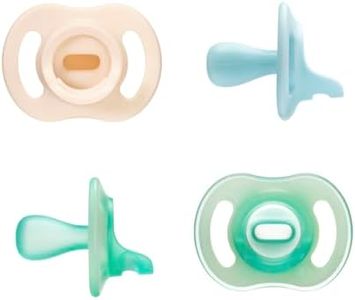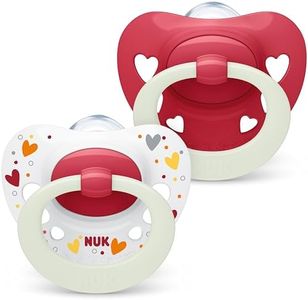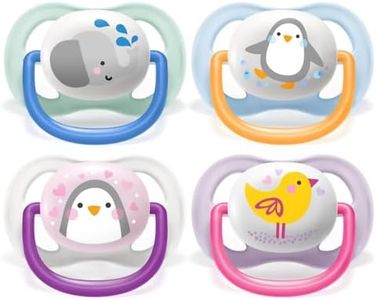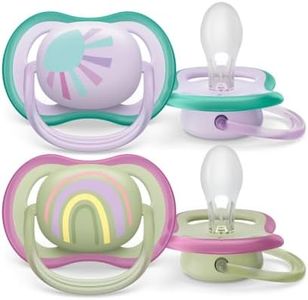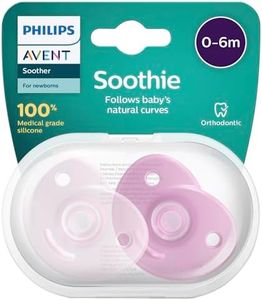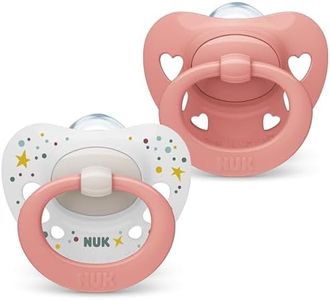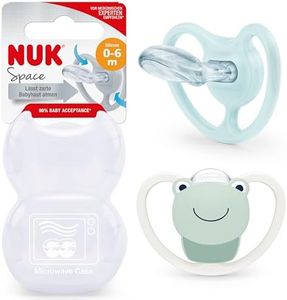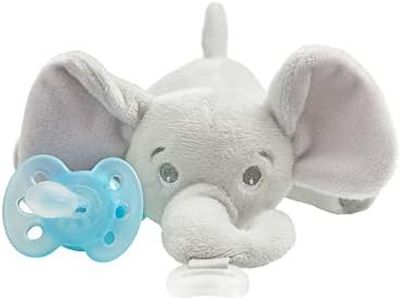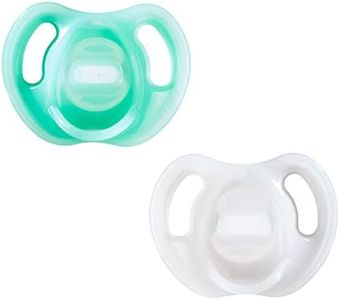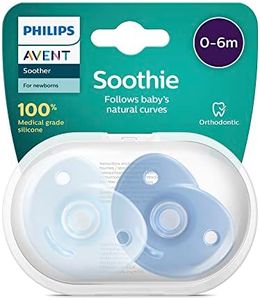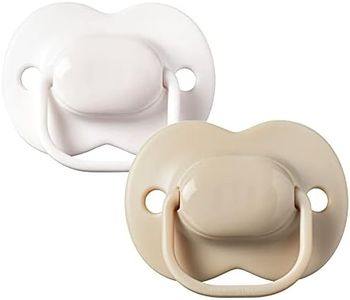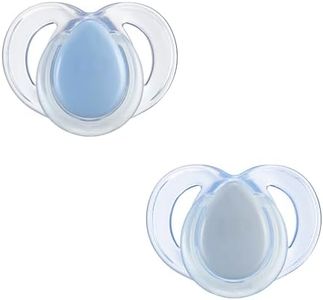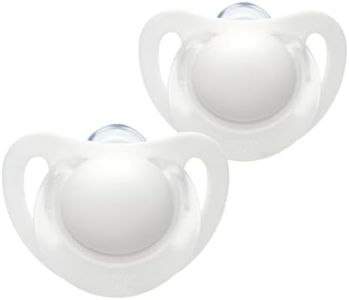We Use CookiesWe use cookies to enhance the security, performance,
functionality and for analytical and promotional activities. By continuing to browse this site you
are agreeing to our privacy policy
10 Best Pacifier For Breastfed Babies
From leading brands and best sellers available on the web.Buying Guide for the Best Pacifier For Breastfed Babies
Choosing a pacifier for a breastfed baby needs a bit of extra thought as the goal is to support breastfeeding, while also soothing your baby. Look for pacifiers that are designed to mimic the natural feel and movement of a mother's breast to minimize any disruption to breastfeeding habits. Always observe your baby's preference and comfort with a new pacifier, and remember to regularly check the pacifier for wear and cleanliness to keep your baby safe and healthy.Nipple ShapeThe shape of the pacifier's nipple is crucial because it affects how natural it feels to a breastfed baby. Orthodontic nipples are flat on the bottom and rounded on the top, mimicking the shape of a mother's nipple during breastfeeding, while round (or cherry-shaped) nipples more closely resemble the nipple in the baby's mouth. For breastfed babies, choosing a shape that closely resembles the breast can help prevent nipple confusion, making it easier for the baby to switch between breast and pacifier. If your baby is struggling with switching, try both types to see which one they accept more easily.
Nipple MaterialPacifiers usually come with nipples made of either silicone or latex. Silicone nipples are firmer, more durable, and easier to clean, while latex is softer and more flexible, feeling more like a real nipple. However, some babies may have allergies to latex. For breastfed infants, a softer nipple may feel more familiar and comforting, but durability and hygiene are equally important. If your baby tends to reject firmer textures, try a latex one (if no allergy risk), otherwise stick with silicone for longevity and easier maintenance.
Size and Age RecommendationPacifiers are available in different sizes to suit the age and developmental stage of your baby. Using the right size is important because one that’s too small or too large can be uncomfortable or even unsafe. Manufacturers usually indicate the age range each pacifier is designed for (such as 0-6 months or 6-18 months). Choose a pacifier that matches your baby’s age and periodically check if it’s time to size up as they grow.
One-Piece vs. Multi-Piece ConstructionA one-piece pacifier is made from a single material without any joints or seams, reducing the risk of it falling apart and posing a choking hazard. Multi-piece pacifiers can sometimes separate and become less hygienic. For young babies and especially for those who breastfeed, a one-piece design is often safer and easier to clean, making it a better fit for daily use.
Shield Size and Ventilation HolesThe shield is the outer part of the pacifier that rests against your baby’s lips. Its size and the presence of ventilation holes are vital for safety—too small a shield can be a choking hazard, while ventilation holes help prevent skin irritation by allowing air to circulate. Always select a pacifier with a shield that comfortably fits your baby’s face and includes several large air holes for maximum comfort and safety.
Ease of CleaningKeeping pacifiers clean is very important for a breastfed baby’s health. Some pacifiers are dishwasher-safe, while others need to be sterilized by boiling. Look for a pacifier that matches your cleaning habits—if you want something easy to sanitize, choose a pacifier known for its simple design and material that won’t retain smells or stains.
